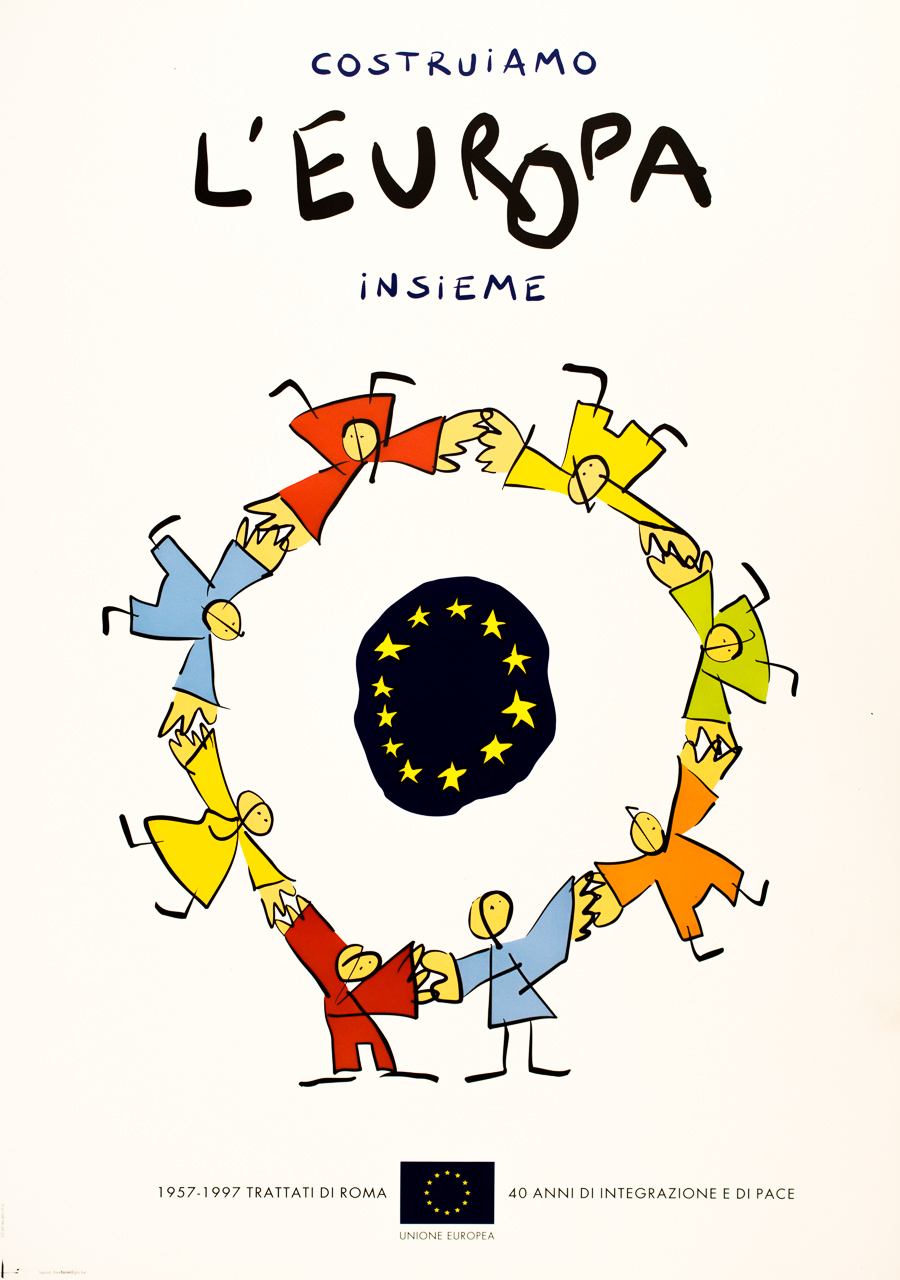Dr George Newth highlights the key role of Italian anti-fascist ideas in shaping a united Europe.
This poster, produced in 1997, celebrates ‘40 years of integration and peace’ in Europe since the signing of the Treaty of Rome which brought about the European Economic Community (ECC), the pre-cursor to what would become the European Union (EU). The message written in Italian of ‘Costruiamo L’Europa Insieme’ (Let’s Build Europe Together) is, however, also indicative of how The ECC and later the EU represented the primary vehicle through which Italy regained international legitimacy and demonstrated democratic maturity in order to overcome its Fascist past.
The idea of a united Europe and a united Italy have a history long preceding fascism and anti-fascism. In 1850, 11 years prior to the ‘Risorgimento’ (the Italian movement of national unification), Italian patriot Carlo Catteneo, argued that Italy’s unification could only be truly secured through a united Europe. Drawing inspiration from the United States of America’s federal model, arguing that ‘only a United States of Europe can ever secure peace and prosperity on the continent’.
Barely 100 years on, however, such an idea of European unity had remained but a pipe-dream and a unified Italy had instead been involved in two destructive World Wars. While the aftermath of the First World War had led to the rise of Fascism in Italy, Mussolini’s subsequent fascist dictatorship (1922-1943), with its focus on belligerent nationalism, racism and imperialism, had once again had thrown Italy into the abyss of European conflict.
In 1941, amidst the chaos brought about by this conflict, came hope for a more peaceful European future in the form of ideas developed by Italian Communist and anti-fascist, Altiero Spinelli. ‘The Ventotene Manifesto’ named after the island on which Spinelli was interned as a political prisoner contained ideas which would have significant influence on the post-war European project. For anti-fascists like Spinelli, the common denominator to the two World Wars in the first half of the 20th century was the poisonous doctrine of nationalism. The remedy was European federalism, presented as synonymous with a lasting peace. Indeed, the anti-fascist resistance in Europe in general viewed European unity and in particular a federal unity as a key bulwark against a return of totalitarian and fascist regimes and it was among the Resistance movements of Nazi-occupied Europe that the voice of European unity was most strongly heard.
Spinelli, like Cattaneo almost a century before him, looked to the USA’s federal model for inspiration and advocated the need for a similar constitutional blueprint for European integration and for a federal, united states of Europe in which nation states would cooperate closely and national identity would be superseded by a European identity. While the high hopes for a new and radical federalist morality in Europe would be dashed by the outbreak of the Cold War and the prevalence of more moderate ‘functionalist’ ideas of European integration, Spinelli’s ideas would re-emerge in the 1980s. On becoming a Member of European Parliament, Spinelli used his ideas to provide an impetus for the negotiations which led to the Single European Act of 1986 and the Maastricht Treaty of 1992, thus the creation of the European Union.
The notion of Building Europe Together therefore owes much to Italian anti-fascism and federalism. The various crises to befall Europe over the past two decades, however, have raised a key question of what type of Europe the EU represents. Exploiting these crises, far-right parties such as the Italian Lega and Brothers of Italy, have contributed to a recent upsurge of Eurosceptic political discourse. Spinelli’s ideas, rooted in notions of Communist and anti-fascist Internationalism, remain key to building a Europe which can re-imagine the role of the European Union, respond to the contemporary challenge of the Far Right and move the European project beyond its current impasse.
